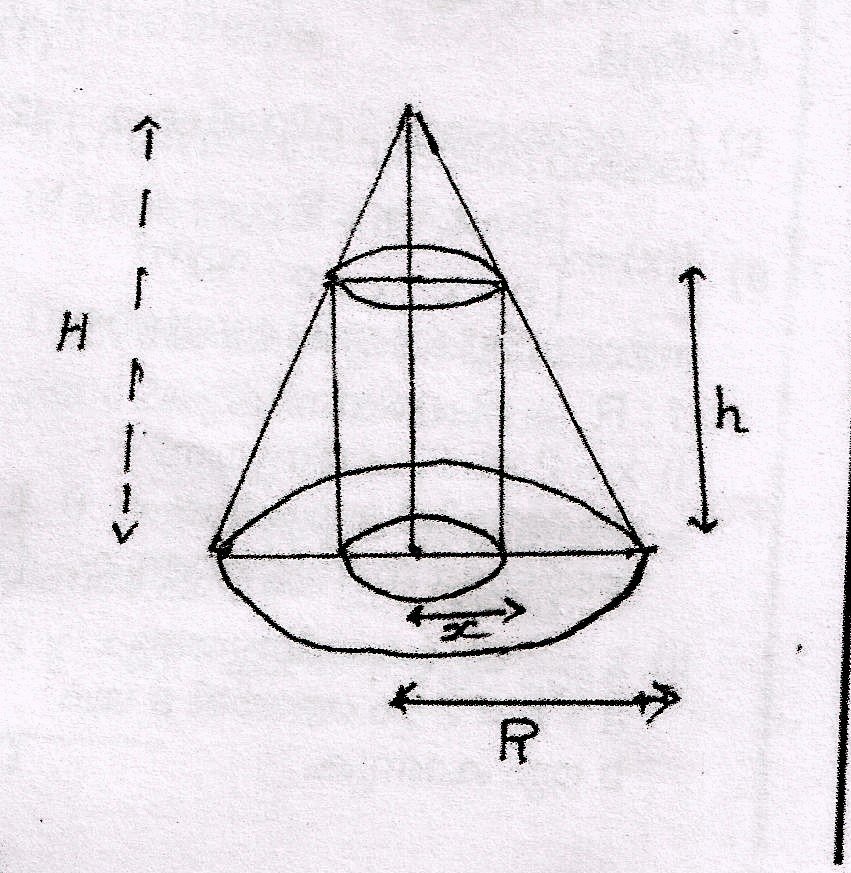cylinder....... help

A circular cylinder is inscribed in a given cone of radius R cm and height H cm as shown in the figure Find the curved surface area S of the circular cylinder as a function of x Find the relation connecting x and R when S is maximum
No vote yet
1 vote
Easy Math Editor
This discussion board is a place to discuss our Daily Challenges and the math and science related to those challenges. Explanations are more than just a solution — they should explain the steps and thinking strategies that you used to obtain the solution. Comments should further the discussion of math and science.
When posting on Brilliant:
*italics*or_italics_**bold**or__bold__paragraph 1
paragraph 2
[example link](https://brilliant.org)> This is a quote# I indented these lines # 4 spaces, and now they show # up as a code block. print "hello world"\(...\)or\[...\]to ensure proper formatting.2 \times 32^{34}a_{i-1}\frac{2}{3}\sqrt{2}\sum_{i=1}^3\sin \theta\boxed{123}Comments
By Similarity of Triangles,
R−xh=RH
⇒h=RH(R−x)
Now, it is clear that,
S=2πx×h
Substitute the value of h and get S as a function of x.
Differentiate the function that you just derived wrt x, and put it equal to 0.
You will find a relation between x and R.
Log in to reply
Right.
2pixh = S, x = R(1-h/H)..............................................................(when S is maximum)
S = 2pix ; x= R[1-h/H]
need help fast
Log in to reply
put H/R =k k=(H-h)/x from this h=H-kx after this S=2pixh put h=H-kx differentiate with respect to x and put dS/dx=0 from this x=R/2
thanks 2 all
right 2pixh = S, x = R(1-h/H)..........(when S is maximum)